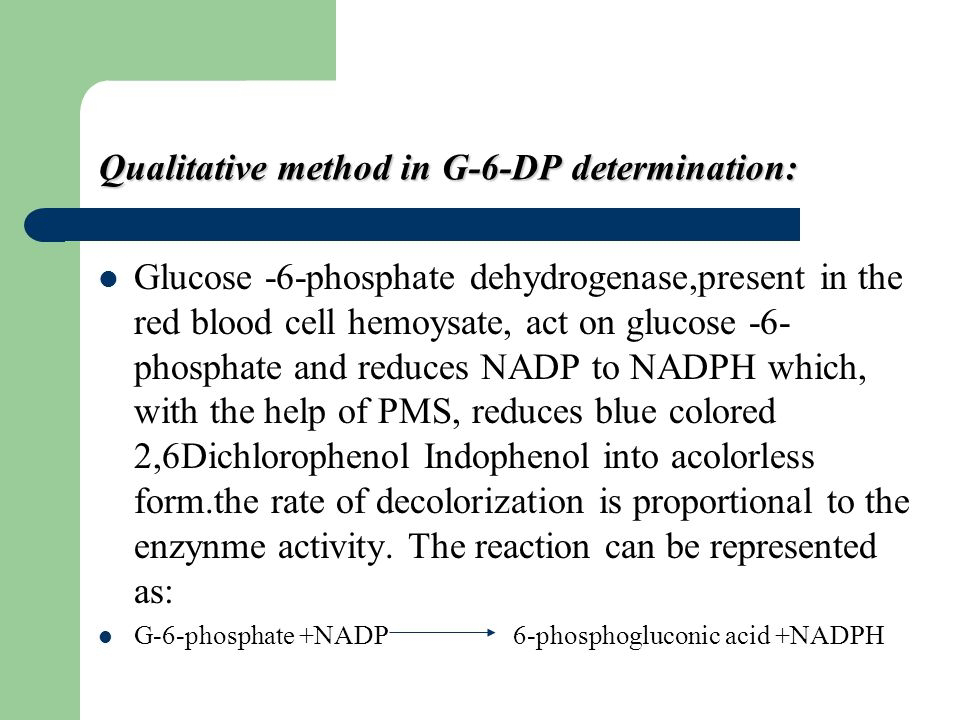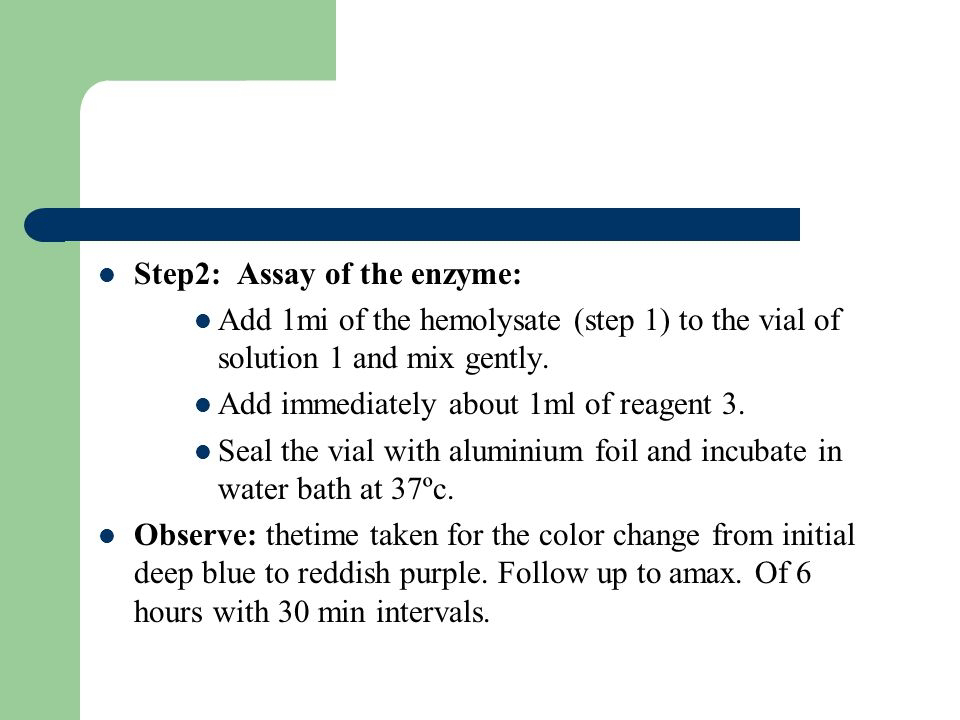If you don't have enough G6PD, it's known as G6PD deficiency this is a genetic disorder . G6PD deficiency can cause the destruction of red blood cells. When red blood cells are destroyed faster than the body can replace them, it's called hemolytic anemia. If you have hemolytic anemia, your cells don't get all the oxygen they need.
Most people with G6PD deficiency don't have symptoms of disease until they are exposed to certain "triggers," which set off the destruction of red blood cells. Triggers include:
- Fava beans, also called broad beans
- Viaral infections
- Bacterial infections
- Certain a antibiotics
- Anti-malaria medicines
Women who have slightly lower than normal amounts of G6PD may be "carriers" of a G6PD deficiency. That means they have one defective G6PD gene and one normal G6PD gene. These women rarely have symptoms, as their normal G6PD genes usually make enough healthy red blood cells. But they have a risk of passing on the defective gene to their children. Male children are more likely to develop G6PD symptoms than female children.














0 Comments